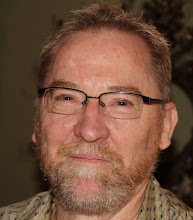After an absolutely whirlwind tour of China, we found ourselves at day last. I’m glad I’ve been writing regularly, because by now, the early part of the trip is becoming a blur.
We spent the last morning doing a little more Shanghai shopping. We took a cab with two fellow travelers to the Science and Technology Museum. Now you might think that we were looking for some final day enlightenment. In fact, we were seeking out the shopping area sprawling beneath this Museum.

The plaza was a non-stop warren of alleys filled with all manner of shops, some strictly directed to tourists and some a little more high end, with a huge area devoted to tailor’s shops. Had we been staying longer in Shanghai, we might have had something custom made. The common denominators of all the shops were the young ladies sitting at the entrances to the shops encouraging all passersby to enter.

We were glad to take a little jaunt to this area, because it gave us another opportunity to admire the wonderfully unique and imaginative architecture of Shanghai. Since so much is new here, there appears to have been a competition between builders to achieve the most beautiful structures. A true feast for the eyes!

By early afternoon, after a western meal – aka hambuger - at our hotel, we were whisked off to Pudong International Airport for our flight home. At this time, we bid adieu to our national guide Ling Ling. She certainly worked beyond expectations to make the tour most enjoyable.


There were no hitches with our flight to Chicago today. We had a rough stretch over the north Pacific, but both of us slept for half of the flight and before we knew it, we were in Chicago. We then had an opportunity to explore a bit of O’Hare Airport, as we needed to go from terminal 5 to 3 to catch our Toronto flight. The connection was very slick. We were also sitting in front of Miss Universe Canada all the way to Toronto, which brightened up the day, for me anyway.
So that’s it for another adventure, and THAT IT WAS! We saw much more than we ever dreamed we could in the two-week period and although one specific highlight comes to mind, there were so many highlights to consider. I think the Great Wall is still number one, but then you can’t ignore the Forbidden City, Tiananmen Square, the Terracotta Warriors, the Chongjing market and hotpot dinner, the Yangzte Cruise, Buddha World and Shanghai itself. Wow!!! Loved it!!!


















































